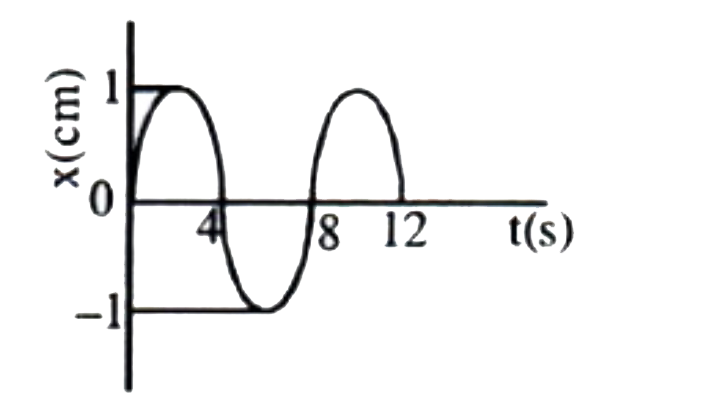Assertion : For a given simple harmonic motion displacement (from the mean position) and acceleration have a constant ratio.
Reason : T=2π√∣∣∣displacementacceleration∣∣∣.
If both Assertion and Reason are true and the Reason is correct explanation of the Assertion.
If both Assertion and Reason are true but Reason is not the correct explanation of Assertion.
If Assertion is true, but the Reason is false.
If Assertion is false but the Reason is true.
The correct Answer is:A
To solve the question, we need to analyze both the assertion and the reason provided.
Step 1: Understanding the Assertion
The assertion states that "For a given simple harmonic motion, displacement (from the mean position) and acceleration have a constant ratio."
In simple harmonic motion (SHM), the acceleration a is directly proportional to the displacement x from the mean position and is given by the formula:
a=−ω2x
where ω is the angular frequency.
From this equation, we can express the ratio of acceleration to displacement:
ax=−ω2
This shows that the ratio ax is constant, as ω is a constant for a given SHM. Therefore, the assertion is true.
Step 2: Understanding the Reason
The reason states that T=2π√displacementacceleration.
In SHM, the period T is related to the angular frequency ω by the formula:
T=2πω
We can also relate ω to displacement and acceleration. From the earlier relationship, we have:
ω2=ax
Thus, we can write:
ω=√ax
Substituting this into the period formula gives:
T=2π√xa
This shows that the reason is also true and correctly explains the assertion.
Conclusion
Both the assertion and the reason are true, and the reason is a correct explanation of the assertion.
Final Answer
- Assertion: True
- Reason: True
- The reason is a correct explanation of the assertion.
---
The assertion states that "For a given simple harmonic motion, displacement (from the mean position) and acceleration have a constant ratio."
a=−ω2x
where ω is the angular frequency.
ax=−ω2
This shows that the ratio ax is constant, as ω is a constant for a given SHM. Therefore, the assertion is true.
The reason states that T=2π√displacementacceleration.
T=2πω
We can also relate ω to displacement and acceleration. From the earlier relationship, we have:
ω2=ax
Thus, we can write:
ω=√ax
Substituting this into the period formula gives:
T=2π√xa
This shows that the reason is also true and correctly explains the assertion.
Both the assertion and the reason are true, and the reason is a correct explanation of the assertion.
- Assertion: True
- Reason: True
- The reason is a correct explanation of the assertion.
Topper's Solved these Questions
- SIMPLE HARMONIC MOTIONBOOK - DC PANDEY ENGLISHCHAPTER - SIMPLE HARMONIC MOTIONEXERCISE - Level 1 Single Correct
24 Videos
- SIMPLE HARMONIC MOTIONBOOK - DC PANDEY ENGLISHCHAPTER - SIMPLE HARMONIC MOTIONEXERCISE - Level 1 Subjective
39 Videos
- SIMPLE HARMONIC MOTIONBOOK - DC PANDEY ENGLISHCHAPTER - SIMPLE HARMONIC MOTIONEXERCISE - Miscellaneous Examples
8 Videos
- SEMICONDUCTORS AND ELECTRONIC DEVICESBOOK - DC PANDEY ENGLISHCHAPTER - SEMICONDUCTORS AND ELECTRONIC DEVICESEXERCISE - More than One Option is Correct
3 Videos
- SOLVD PAPERS 2017 NEET, AIIMS & JIPMERBOOK - DC PANDEY ENGLISHCHAPTER - SOLVD PAPERS 2017 NEET, AIIMS & JIPMEREXERCISE - Solved paper 2018(JIPMER)
38 Videos
Similar Questions
Knowledge Check
A particle executing simple harmonic motion with an amplitude 5 cm and a time period 0.2 s. the velocity and acceleration of the particle when the displacement is 5 cm is
A0.5πms−1,0ms−2B0.5ms−1,−5π2ms−2C0ms−1,−5π2ms−2D0.5πms−1,−0.5π2ms−2
Assertion : Simple harmonic motion is an example on one dimensional motion with non-uniform acceleration .
Reason : In simple harmonic motion, acceleration varies with displacement linearly.
View SolutionThe total energy of a particle, executing simple harmonic motion is.
where x is the displacement from the mean position, hence total energy is independent of x.
View SolutionA body is vibrating in simple harmonic motion . If its acceleration in 12cms−2 at a displacement 3 cm from the mean position, then time period is
View SolutionA particle starts simple harmonic motion from the mean position. Its amplitude is a and total energy E . At one instant its kinetic energy is 3E/4 . Its displacement at that instant is
View SolutionAcceleration of a particle in SHM at displacement x=10cm (from the mean position is a=−2.5cm/s2). Find time period of oscillations.
View SolutionThe period of oscillation of a harmonic oscillator is T=2π√displacement/accelerations Does T depend on displacement ?
View SolutionThe x-t graph of a particle undergoing simple harmonic motion is shown below. The acceleration of the particle at t=23s is

View Solution
